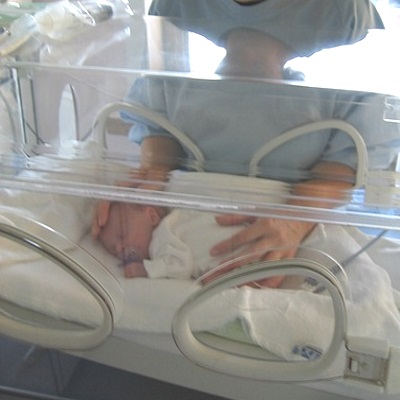 I’ve written about the time I thought I was going into labor at seven months. Though that was a false alarm, preterm labor is always a possibility for pregnant women — one in eight babies in the U.S. is born before 37 weeks’ gestation. (A full term pregnancy is actually considered to be 40 weeks, but after 37 it’s not called preterm anymore.)
I’ve written about the time I thought I was going into labor at seven months. Though that was a false alarm, preterm labor is always a possibility for pregnant women — one in eight babies in the U.S. is born before 37 weeks’ gestation. (A full term pregnancy is actually considered to be 40 weeks, but after 37 it’s not called preterm anymore.)
Babies born early need extra care and attention, and not just because they’re smaller and more vulnerable. Full term babies are developing right up until birth, and preterm babies miss out on some of this time, which can cause lifelong problems. For example, the blood vessels in their eyes can develop abnormally, causing the retina to detach and the child to have mild or severe vision problems.
Obviously the best approach is to try to prevent preterm birth. Some factors are out of your control, others you can do something about.
According to the Centers for Disease Control, factors associated with preterm birth include previous preterm births, high or low age of the mother, and even race. As the CDC says, “although most black women give birth at term, on average, black women are about 50% more likely to have a premature baby.†Research is going on to find out the reason for this.
Other factors less within your control or totally outside it include low income, high blood pressure, carrying multiple babies, infections like chickenpox or rubella, and chronic diseases. Then there are the factors that come from your behavior: smoking, drinking, drug use. If you can cut these out, get timely prenatal care, and minimize your stress, you’ll be doing a lot to cut your risk of preterm labor. If you’ve already had a preterm baby, you may be able to take progestogens to try to prevent another early birth.
How can you tell if you may be going into preterm labor? The same way you know you’re in regular labor. The CDC gives these signs:
- Contractions (the abdomen tightens like a fist) every 10 minutes or more often.
- Change in vaginal discharge (leaking fluid or bleeding from the vagina).
- Pelvic pressure—the feeling that the baby is pushing down.
- Low, dull backache.
- Cramps that feel like a menstrual period.
- Abdominal cramps with or without diarrhea.
If this happens to you, you need to see a doctor, for your own sake and the baby’s. Preterm birth has its risks, and you’ll need to do everything you can to reduce them.










